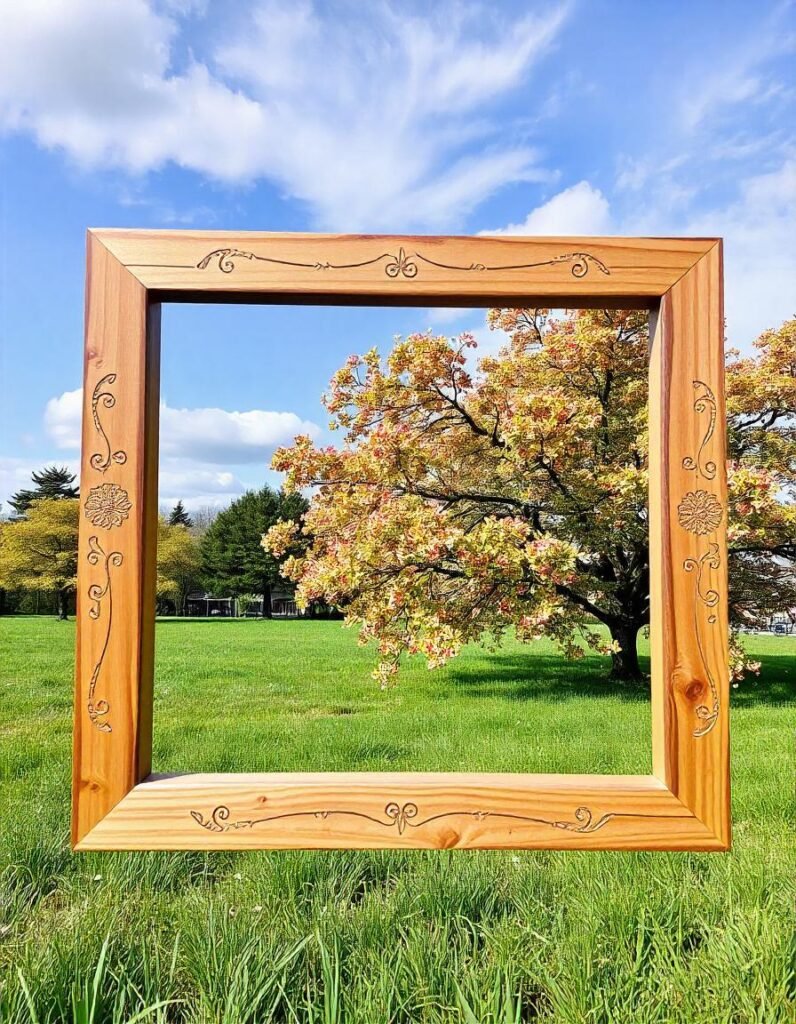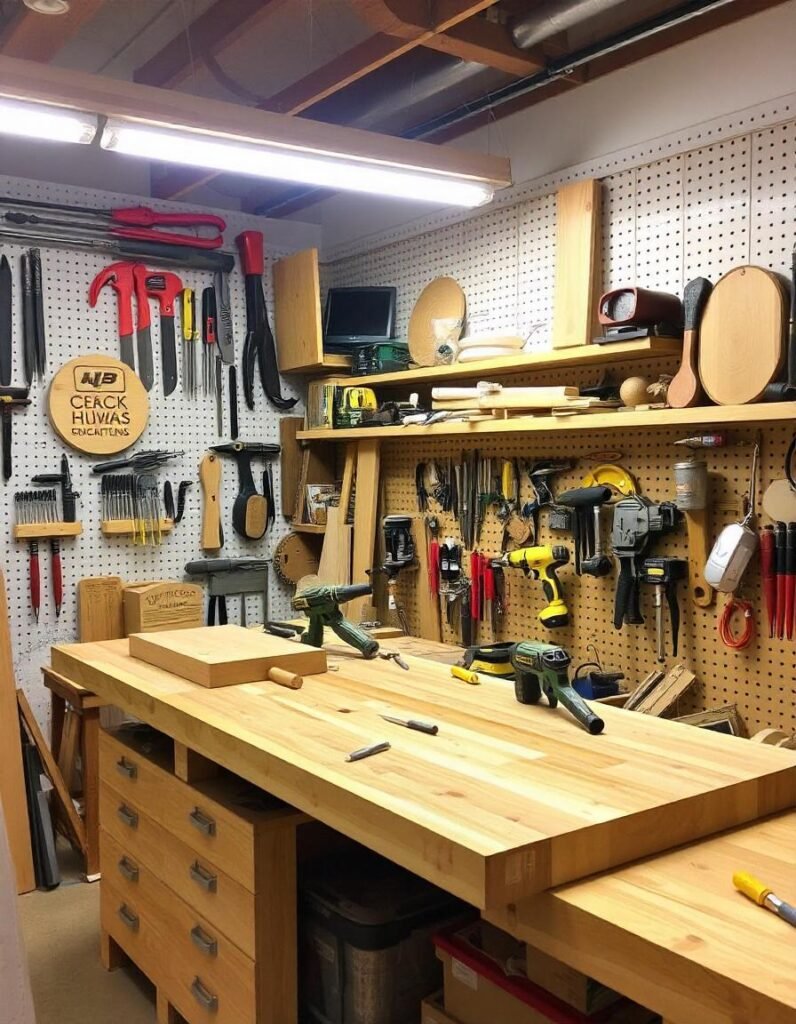Discover Pro Woodworking Tips – Get Your Free Guide Today!
The construction of a picture frame is one of the most rewarding woodwork projects. It is an equally thrilling experience to create a display window for your most treasured photo, piece of artwork, or other keepsake as it is to see something that’s worked out with your hands in action. In this way, the displayed item becomes special, as custom framing gives a dash of personality to any interior. Whether you’re an experienced woodworker or just starting out, it will help you get a really nice, custom picture frame through the whole process, step by step. From choosing the perfect wood for the project to assembly and the finishing touches, learn how to make a frame that suits your style and specifications.

1. Choosing the Right Wood for Your Picture Frame
The material you choose is the basis of any woodworking project that will be successful. Picture frames are not an exception. The kind of wood to be used will determine not only the durability but also the attractiveness of the frame. There are different textures, colors, and grains in different woods, adding some form of character to your project.
Popular Wood Choices:
This softwood ranks very popularly among all beginners because it is easy to work with and inexpensively obtainable. It’s a lightweight wood, very easy to come by, and can always be stained or painted to fit your interior decor. However, being a softwood, it is more prone to dents and scratches; hence, it’s better used on frames that won’t be handled frequently.
Oak: That is a traditional picture frame material; much stronger, with a more prominent grain pattern. The hardwood makes an excellent traditional and rustic-style design and will edge any picture with a firm frame that endures over many generations. The rich grain aesthetic looks just awesome stain, capturing its natural beauty.
Maple: This is another hardwood that’s highly prized for its smooth, even grain. It’s perfect for creating modern, sleek frames that call for a clean, minimalist look. Maple is a very dense, strong wood; it’s an excellent choice for frames that have to stand the test of time.
Cherry: There is a reason cherry has long been a favorite: its warm, reddish tone that matures into a deep tone adds richness and sophistication to any frame. This hardwood is cooperative to work with and beeswaxes to gorgeousness, making it a great choice for high-end, elegant picture frames.
Tip: You’ll want to think about more than just the look of wood, however. You should also choose the best wood to coordinate with the piece of artwork or photograph you are displaying. Light-colored woods such as maple or pine will cast light to brighten a room; darker woods such as cherry or walnut offer warmth with rich depth.
Discover Pro Woodworking Tips – Get Your Free Guide Today!
2. Collect Your Tools and Supplies
It is very essential to have all the correct tools and materials at hand before starting with the saw and the assembly. Proper preparation is important for problem-free working with wood. You want to be able to work continuously with the crafting process without any distractions.

Tools:
Miter Saw: A miter saw will help you make those precise 45-degree angle cuts that create the corners of the frame. As long as it’s nicely calibrated, a miter saw will mean your frame pieces dovetail together like a dream, with beautiful, sharp corners.
Measuring Tape: In every successful woodworking project lies accurate measurements. The great measuring tape ensures that all cuts are accurate and also makes sure the frame will be sitting perfectly in the artwork.
Wood Glue: This is what is going to hold the frame pieces together. For a strong and durable bond, pick high-quality wood glue that dries clear and allows time to adjust, so it doesn’t set real quick.
Clamps: Clamps hold the frame pieces in place and tension the glue until dry. A few bar clamps or corner clamps will make this assembly process go much more smoothly and leave you with a nice, square frame.
Sandpaper (Assorted Grits): Rub on the wood edges and surfaces to prepare them for finishing. Use a coarser grit to transversely peel off any rough-surfaced areas first and then progress on to finer grits for a smooth and even finish.
Finishing Nails or Brad Nails: These are for reinforcing the glued joints of the frame, adding strength and stability. A nail gun will bring this part of the work up to speed, but a hammer works equally well for small projects.
Hammer or Nailgun: You will need one of these tools, depending on your preference, to drive finishing nails or brad nails into the frame. A nail gun would make the task easier and would further reduce the risk of splitting the wood.
Wood Stain or Paint (Optional): Based on your choice of look, you can either stain or paint your frame. Stains accent the grain of the wood, while paint can be added in pop colors or used to make it look modern.
Materials Needed
Planks of Selected Wood: The choice of wood will depend on the style and size of the frame you are making. Ensure they are straight without warping or large knots, which are a weak point of the frame.
Backing Board: This is fixed at the back of your picture frame to give support to the artwork or the photo. It should be stiff; hence, MDF or acid-free foam may be recommended for the more delicate ones.
Glass or Acrylic Sheet: This protects the artwork from dust, extra moisture, or physical damage. Acrylic is lighter and shatterproof, a property that makes it the best where the frame is large or if the picture is hanged in a kid’s room.
Hanging Hardware : Select the appropriate hanging hardware for the size and weight of your frame such as sawtooth hangers, D-rings, or wire hangers. For heavier frames, two D-rings with wire will hold better.
3. Measure and Cut Wood
When measuring and cutting the wood planks, it must be done with precision. The cuts need to be very true to ensure your frame sits together properly and appears professional in the final presentation.
Steps:
Measure the Artwork: Measure the dimensions of the artwork or the picture you intend to place in the frame. This will set the inside dimensions of your frame.
Calculate the Outside Dimensions: Take your inside dimensions and add the width of the frame molding you have taken to give outside dimensions. That way, your frame will be the right size for your artwork and have properly balanced proportions.
Miter Saw Setup: Set your miter saw for a 45-degree angle. This is the angle for making mitered corners in your frame which will fit together to make a square with no gaps in the joint.
Cut the Wood: Cut the wood planks into the dimensions calculated before. Remember to cut two pieces identical to each other for the top and bottom, and another two identical for the sides. Always cut a little longer and trim to adjust the perfect fit.
Pro tip : Check again when you have all your measurements. Measure twice, cut once—then you won’t be wasting materials and time.
4. Join the Frame
Joining the frame is the point where accuracy and patience pay off. When all corners match up, it results in a sturdy, well-built frame.
Now follow the following steps:
Spread Wood Glue: Spread even, light beads of wood glue onto the mitered edges of the frame pieces. Be sure to spread sparingly, as this glue will tend to ooze out of every seam if you use too much.
Fit the Corners Together: Fit the corners together perfectly with precise edge alignment. This step is very careful, with a really close detail being paid, since one would need a squared frame at the end.
Clamp the Frame: With the frame all glued together, apply clamps so that the frame remains square. The corners are to be pressed firmly together. Let the glue dry as per manufacturer’s instructions, typically a couple to several hours.
Nail the Corners: Once the glue has set, nail the corners together with finishing nails or brad nails. Use countersinking to set the nails if you would prefer a flush finish, then fill the holes with wood filler.
Tip: If too much glue comes out on the wood then straight away, wipe it down with a damp rag before it dries and forms a stain.
Discover Pro Woodworking Tips – Get Your Free Guide Today!
5. Sand and Finish the Frame
Sanding and finishing are what convert a meager structure into a professional piece of fine art. The finish you choose is going to dramatically alter how your frame looks in the end.
Steps:
Sand down the frame: Sand the entire frame—front, back, and edges. Remove any rough spots using a rough grit sandpaper of about 80-100, then use a finer one, about 220, to finish with a smooth texture. Pay extra attention to the corners so that they are level and smooth.
Apply Stain or Paint Use a cloth or brush to apply the stain on the wood in the direction of grain to not show irregularities or to create streaks that will show up. Give some time for the stain to enter the wood. Take a clean cloth and wipe the excess off the wood. A primer is to be applied for the paint; then go for two coats of paint, but let the previous coat be completely dry before coating with another.
Lightly Sand Between Coats: This will give your frame a professional finish. Lightly sand—between coats of stain or paint—with fine-grit sandpaper (320 grit), to remove any imperfections and dust; this may also ensure the next coat adheres better.
Apply a coat of clear varnish or polyurethane over the stain or paint to ensure a surface that both protects the wood and is attractive. Step 3 gives your frame a tough finish that’s sure to last.
Tip: Use long, even strokes when putting finish on to prevent bubbles or streaks. Allow the finish to cure completely before handling the frame.
6. Add the Hardware, Glass, Backing, and Artwork
The last step of your picture frame project is to put in the artwork and secure it with the backing and necessary hardware for hanging.
Procedure:
In the Frame insert the Glass or Acrylic Sheet: Slowly fit the glass or acrylic sheet into the frame in a way that it fits comfortably and it is at the flush to the front of the frame.
Insert the Artwork and Backing Board: Lay your photo on top of the glass, and then insert the backing board. Get everything aligned and centered, then secure it.
Secure the Backing: Secure the backing board to the frame with either finishing nails, turn buttons, or frame clips. It serves to secure the picture in place and protects the picture from elements causing damage to it, such as dust.
Attach the Hanging Hardware: Based on the dimensions and weight of your frame, select appropriate hanging hardware. If the frame is relatively small in size, then a sawtooth hanger alone could work well. On bigger frames, however, two D-rings and a wire will be more appropriate for distributing weight equally.
Tip: If your frame is extra large or heavy, take the time to attach pads of felt to the bottom corners so that you can avoid scratching your walls and keep the frame straight while it hangs.
Conclusion:
Making a picture frame is not a simple woodworking project; it’s more of an innovative one and a tad more personalized in respect to the personal touch in decor. Letting you follow these very detailed steps will further enable you in creating a beautiful handcrafted frame, which not only will hold your artwork or photo but also show off a part of yourself. You can either stain or paint or just leave the wood in its own natural color; the result will be a very unique professional picture frame. Now get all your material together and set up where you are working to make a picture frame to suit your own needs; one that will become an heirloom in your own family home within years to come.

